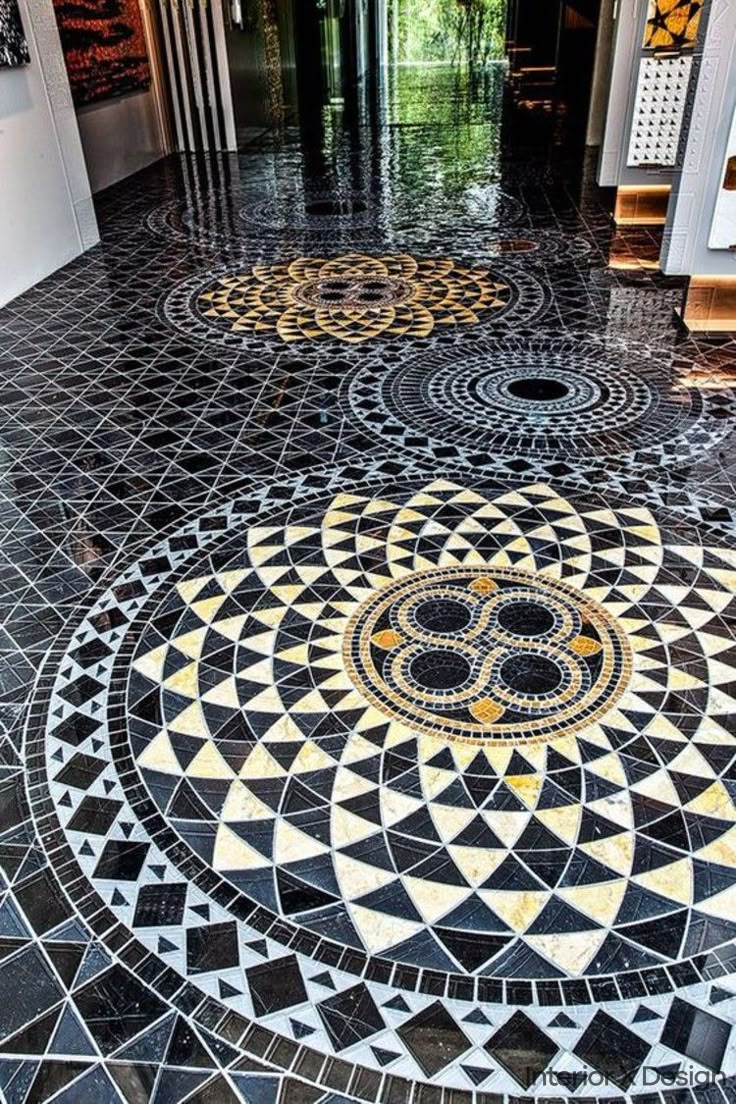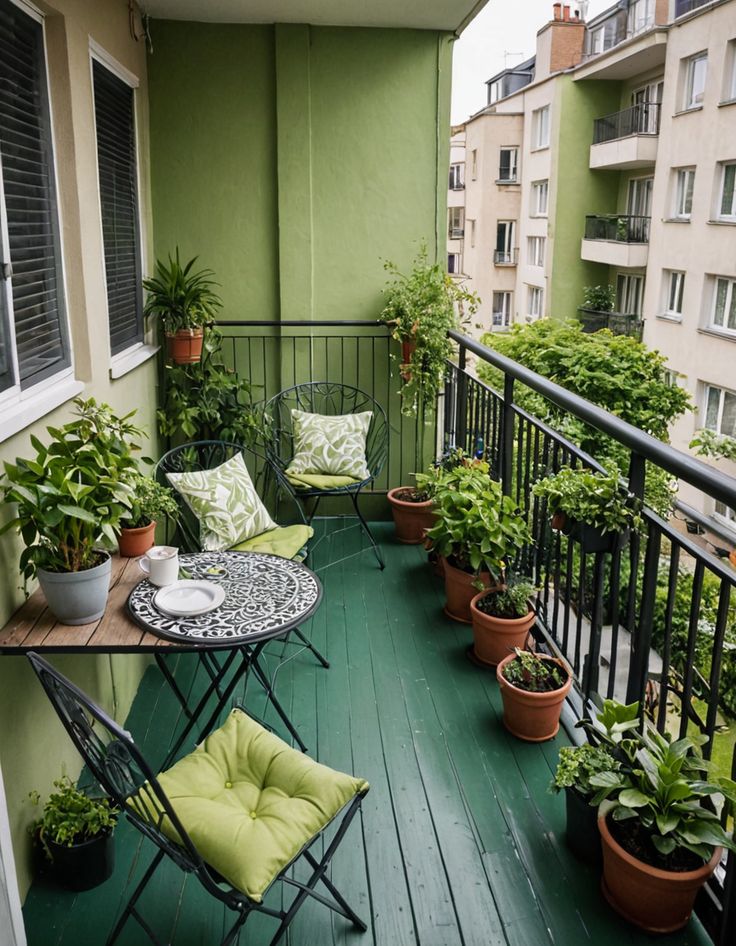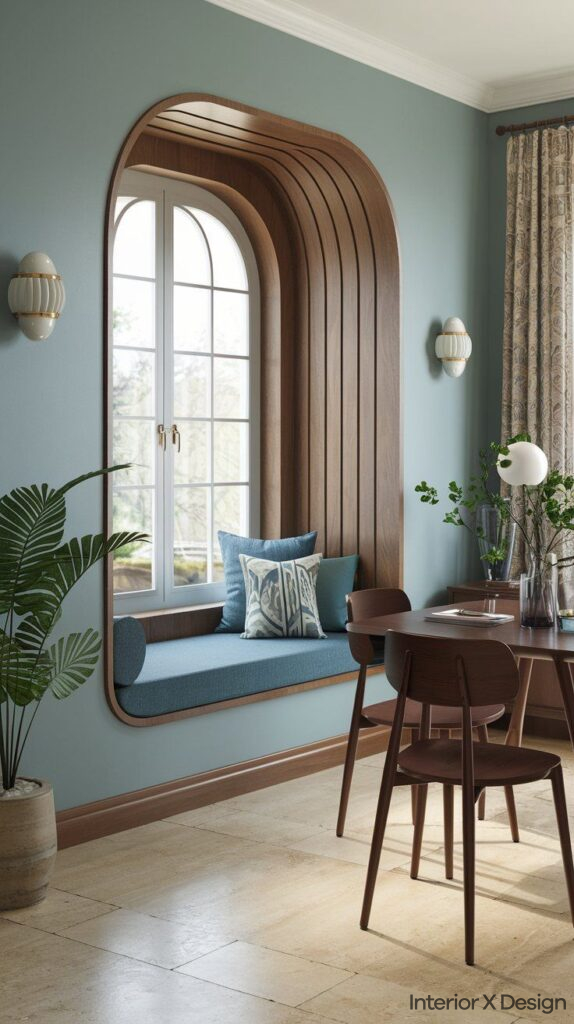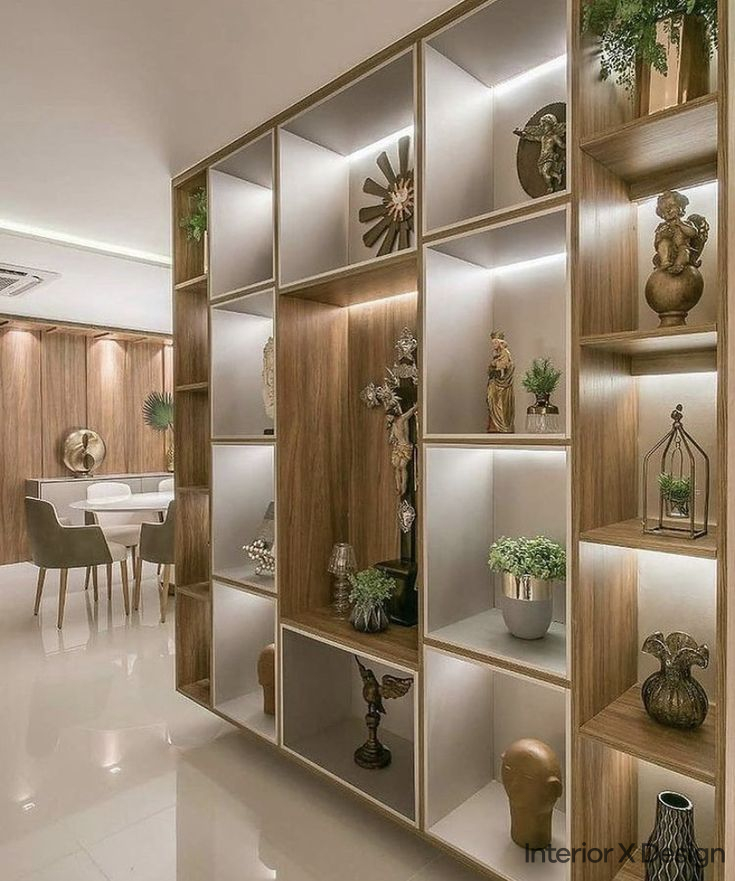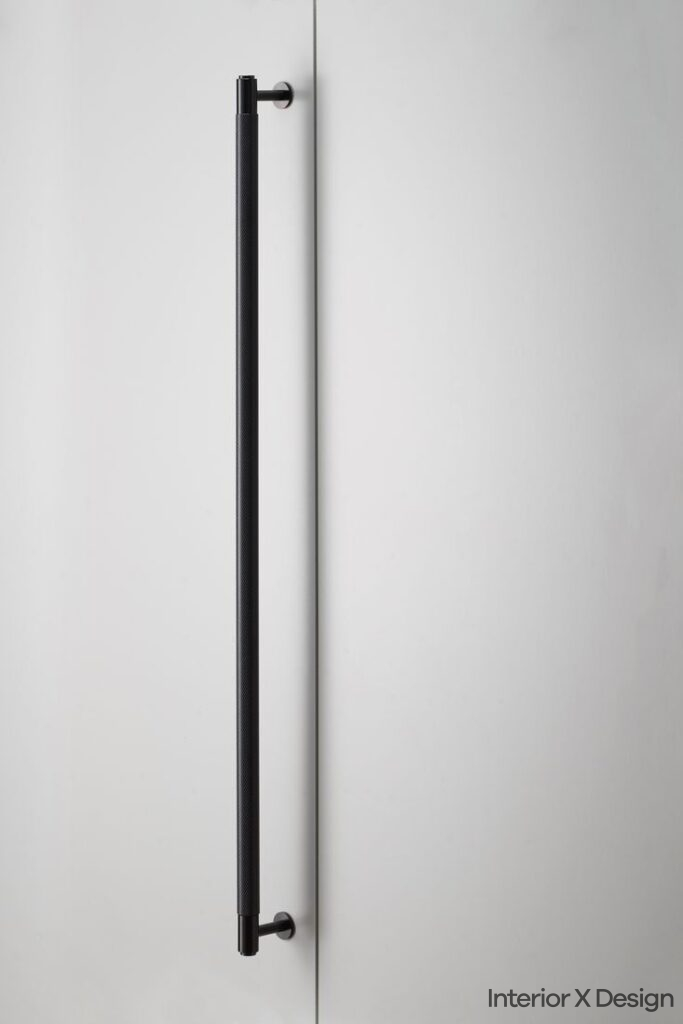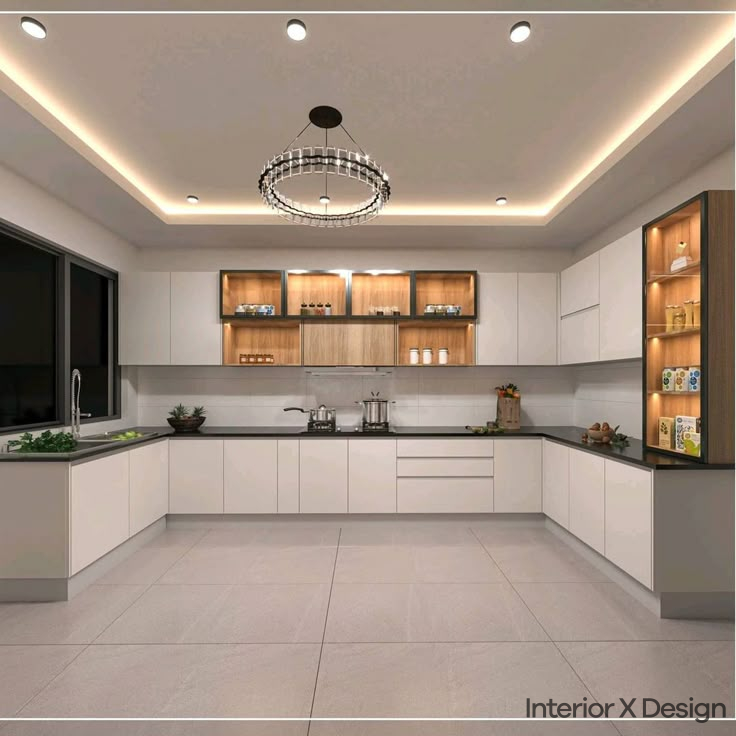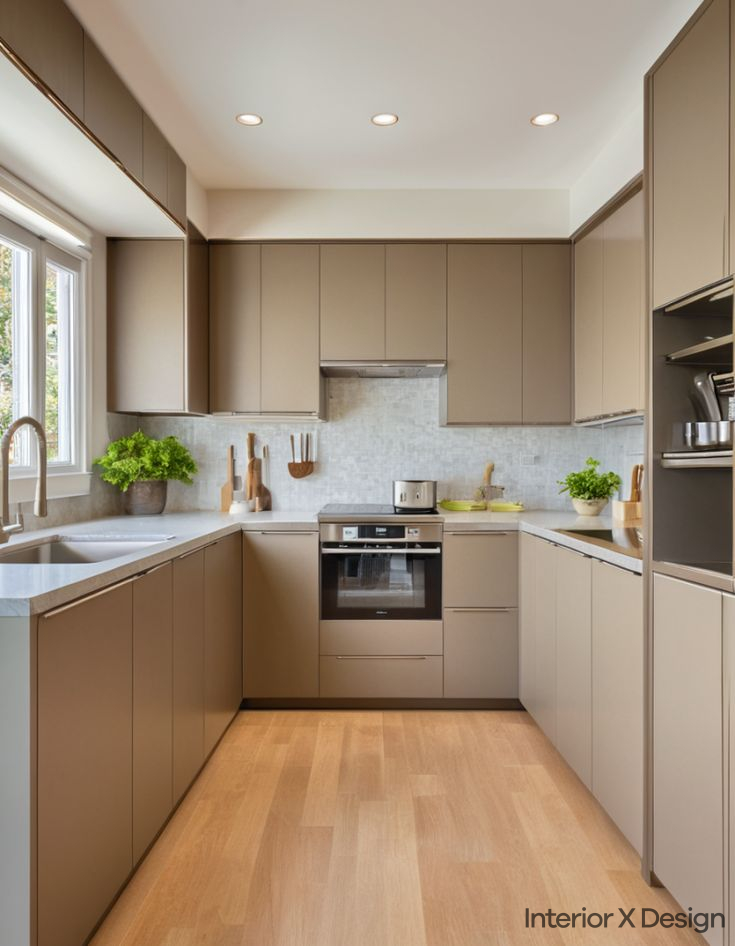1. What Is Mosaic Flooring?
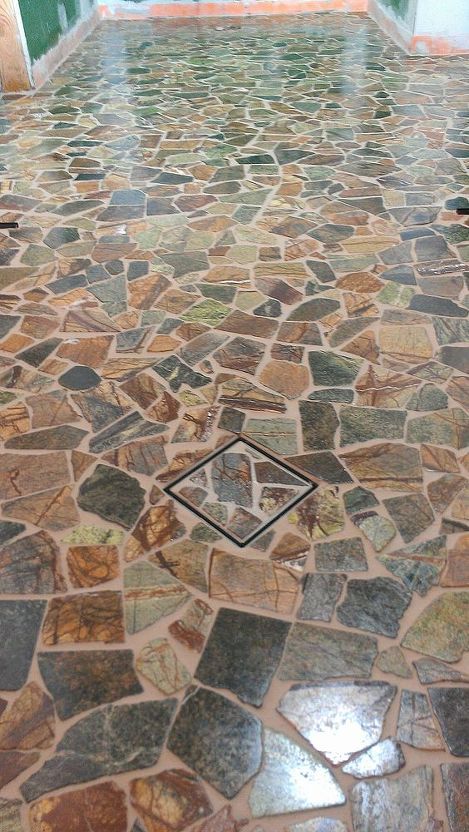
Mosaic flooring refers to a decorative flooring technique that uses small, individual tiles to create intricate patterns and designs. These tiles can be made from various materials, including glass, stone, ceramic, and marble. The tiles are arranged in such a way that they form a larger, cohesive design. Mosaic floors have a rich history, dating back to ancient civilizations like the Greeks and Romans, who used them to create elaborate floors and artwork.
Types of Mosaic Flooring
There are several types of mosaic flooring, and the choice depends on the material, design, and durability required for the space.
- Glass Mosaic Flooring: This type of flooring uses small glass tiles and is known for its shiny, reflective surface. Glass mosaics are often used for creating vibrant and colorful designs, particularly in wet areas like bathrooms and kitchens.
- Stone Mosaic Flooring: Stone mosaics, made from materials like marble or granite, add a luxurious, natural look to spaces. They are durable and can be used in both residential and commercial projects.
- Ceramic Mosaic Flooring: Ceramic mosaics are versatile and come in a wide range of colors and designs. They are perfect for creating intricate patterns and are often used in living rooms or high-traffic areas.
- Metal Mosaic Flooring: These mosaics are made from metal tiles and are typically used for modern or industrial-style designs. They can add a sleek and sophisticated look to a space.
Advantages of Mosaic Flooring
Mosaic flooring is popular due to its unique aesthetic appeal, but it also offers several practical benefits:
- Durability: Mosaic floors are highly durable and long-lasting. The tiles are resistant to wear and tear, making them suitable for both residential and commercial use.
- Low Maintenance: Mosaic flooring is relatively easy to maintain. The grout lines may require periodic cleaning, but the tiles themselves are easy to wipe down and keep clean.
- Customizable Designs: Mosaic tiles come in a wide variety of colors, shapes, and sizes, allowing homeowners to create personalized designs that suit their unique style and preferences.
- Slip Resistance: Certain mosaic tiles, especially those made from stone or textured glass, provide a slip-resistant surface, making them ideal for wet areas like bathrooms and kitchens.
If you’re interested in learning more about mosaic flooring, check out some of our residential and commercial interior design projects.
2. Mosaic Flooring Is a Timeless Design Choice
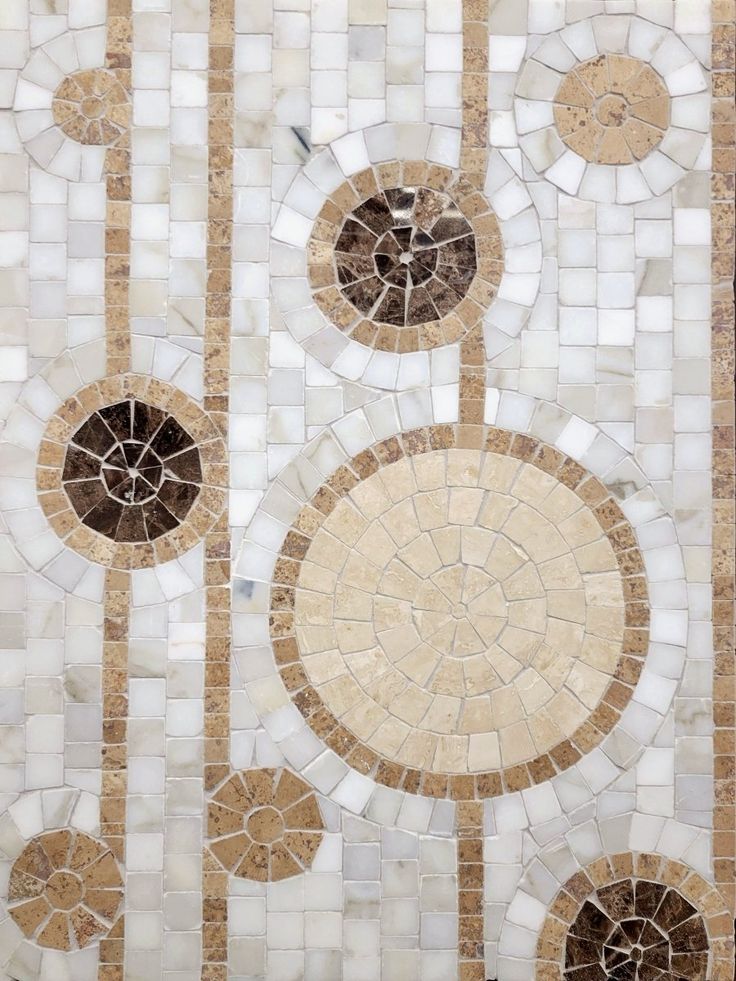
Mosaic flooring has been around for centuries, and its appeal remains strong. The versatility of mosaic flooring allows it to blend seamlessly into various architectural styles, from traditional to modern designs. Whether you want a simple, minimalist look or an elaborate, intricate pattern, mosaic flooring can be tailored to your needs.
Historical Significance of Mosaic Flooring
The use of mosaics dates back to ancient civilizations. The Greeks and Romans were pioneers in using mosaic flooring for both functional and decorative purposes. In fact, many famous historical sites, such as the ancient Roman baths and Greek temples, feature beautiful mosaic floors that have withstood the test of time.
In India, mosaic flooring has also been used for centuries, with vibrant and colorful designs often seen in temples and palaces. Today, mosaic floors are making a comeback in modern Indian homes, as people seek to blend traditional designs with contemporary aesthetics.
If you’re looking for modern interpretations of classic designs, you might want to explore our blog for inspiration.
Versatility in Design
Mosaic floors can be used in a wide range of settings, including kitchens, bathrooms, hallways, and living rooms. Whether you prefer geometric patterns, floral designs, or abstract art, mosaic tiles offer endless possibilities. For example:
- Geometric Patterns: Perfect for creating a modern, minimalist look, geometric mosaic patterns can make a bold statement in any space.
- Floral Designs: Mosaic tiles can be arranged to create delicate floral patterns, ideal for bathrooms or living rooms with a soft, feminine touch.
- Custom Artwork: With mosaic tiles, you can even create custom artwork on your floor, such as a portrait, landscape, or abstract piece that reflects your personal style.
3. Mosaic Flooring Can Be Used in a Variety of Spaces
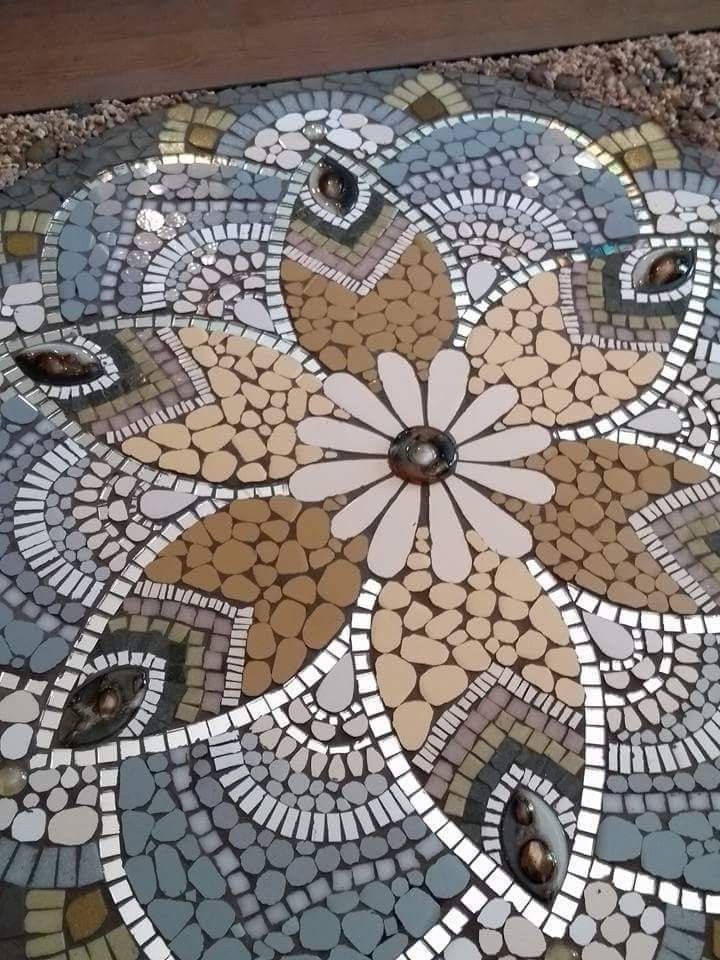
Mosaic flooring is incredibly versatile, and it can be used in a range of different spaces. Whether you’re renovating your home or designing a new commercial space, mosaic tiles can transform any room.
Residential Applications
In residential spaces, mosaic flooring is commonly used in the following areas:
- Kitchens: Mosaic tiles can add a unique touch to your kitchen backsplash or floor. The small, colorful tiles create a vibrant and functional surface that is easy to clean.
- Bathrooms: The durability and water resistance of mosaic flooring make it an excellent choice for bathrooms. You can create intricate designs for your shower floor, bathroom walls, or even bathroom countertops.
- Living Rooms: Mosaic floors can be used in living rooms to create focal points, such as a decorative rug or a unique floor design in the center of the room.
Commercial Applications
Mosaic flooring is also popular in commercial spaces, including:
- Hotels: Many high-end hotels use mosaic flooring in their lobbies, bathrooms, and dining areas to create an elegant and luxurious atmosphere.
- Restaurants and Cafes: The versatility of mosaic tiles makes them an ideal choice for creating unique and stylish flooring in restaurants and cafes.
- Retail Stores: Mosaic floors can enhance the shopping experience by adding a distinctive touch to retail spaces.
For more design ideas, explore our residential and commercial services.
4. The Durability of Mosaic Flooring
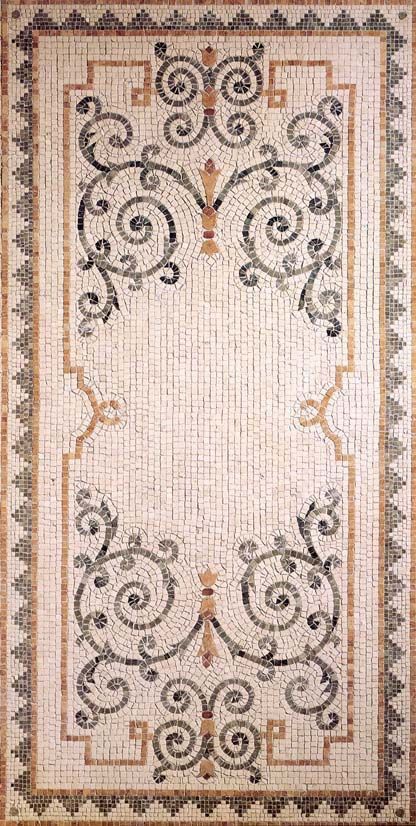
One of the biggest advantages of mosaic flooring is its durability. Mosaic tiles are incredibly tough and can withstand heavy foot traffic, making them suitable for both residential and commercial spaces.
Why Mosaic Floors Are Durable
- Material Strength: Depending on the material you choose (stone, glass, ceramic), mosaic tiles are designed to last for many years without chipping or cracking.
- Seamless Installation: The small size of mosaic tiles means that there are fewer grout lines, making the floor less prone to damage over time.
- Resistance to Water and Stains: Mosaic tiles, especially those made from stone or ceramic, are highly resistant to water and stains, making them an ideal choice for wet areas like bathrooms, kitchens, and swimming pools.
For installation tips and advice, check out our contact page.
5. Mosaic Flooring and Eco-Friendliness
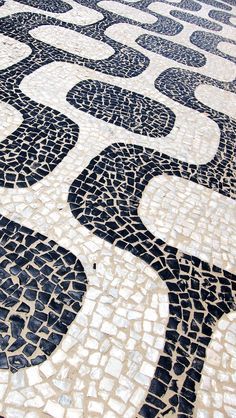
Mosaic flooring can be an eco-friendly choice, depending on the materials you choose. Many mosaic tiles are made from natural stone, recycled glass, or sustainable materials, which makes them an environmentally responsible option.
Sustainable Materials for Mosaic Flooring
- Recycled Glass: Mosaic tiles made from recycled glass are an eco-friendly option. They are made from discarded glass bottles and jars, which reduces waste and energy consumption.
- Natural Stone: Natural stone mosaic tiles, such as marble or slate, are not only durable but also environmentally friendly. These materials are abundant and do not require harmful chemicals to produce.
- Bamboo and Wood: Mosaic tiles made from bamboo or reclaimed wood offer a sustainable alternative to traditional flooring materials.
If you’re interested in exploring eco-friendly design options, check out our residential services.
6. Cost of Mosaic Flooring
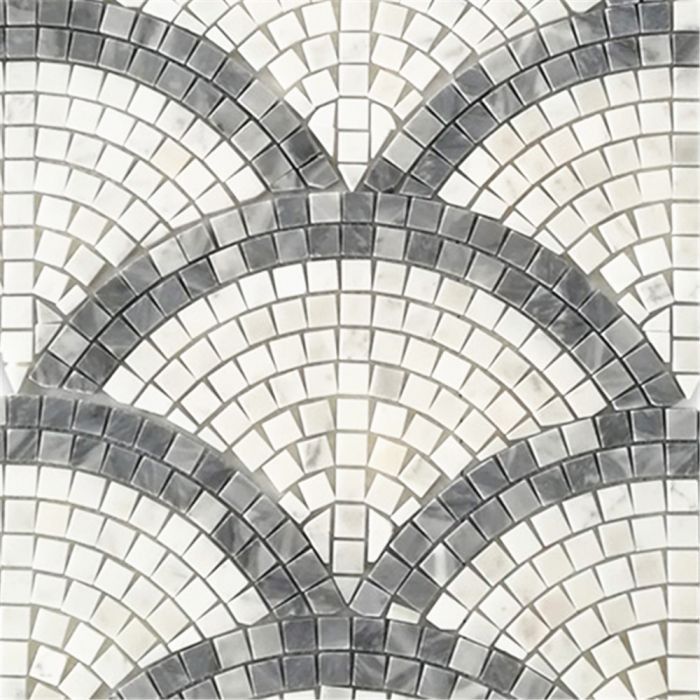
Mosaic flooring comes in a range of prices, depending on the materials, design, and complexity of the installation. While stone and glass mosaics tend to be more expensive, ceramic mosaics are often more budget-friendly.
Factors Affecting the Cost of Mosaic Flooring
- Material: Natural stone mosaics, such as marble or granite, are typically more expensive than ceramic or glass mosaics.
- Design Complexity: Custom mosaic designs, particularly those that involve intricate patterns or artwork, may increase the cost of installation.
- Installation: The cost of installation can vary depending on the complexity of the project and the region. In some areas, skilled mosaic installers may charge a premium for their services.
For cost estimates and design ideas, feel free to reach out to us via our contact page.
7. Installation Process for Mosaic Flooring
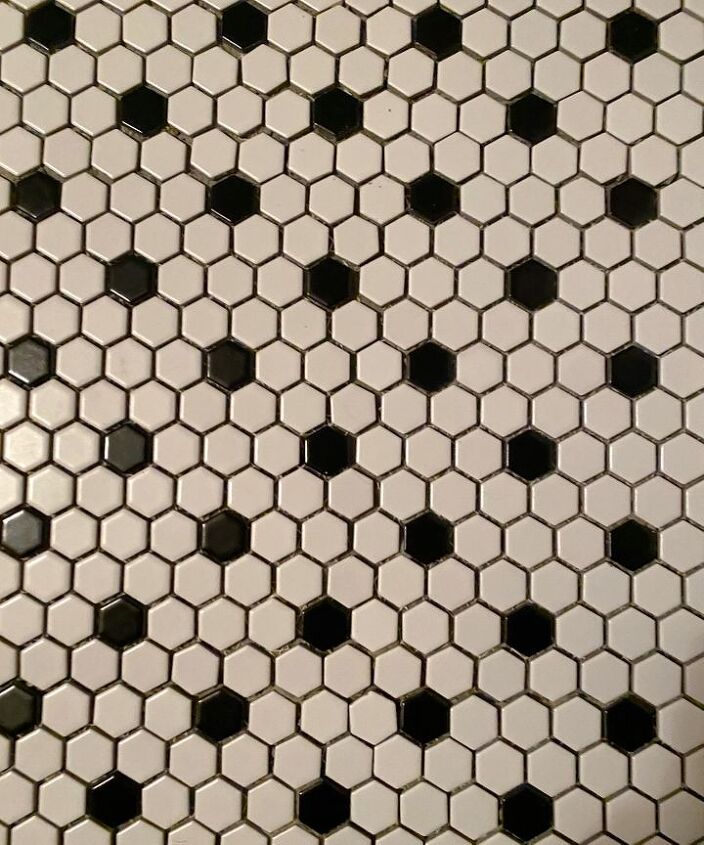
The installation of mosaic flooring requires skilled craftsmanship to ensure that the tiles are properly aligned and the grout lines are even. Here’s a basic overview of the mosaic flooring installation process:
- Preparation: The surface needs to be clean and level before installation. Any existing flooring, such as old tiles or carpet, will need to be removed.
- Tile Placement: Mosaic tiles are usually installed on mesh backing, which makes them easier to arrange. The tiles are carefully placed, ensuring that each piece fits perfectly with its neighbors.
- Grouting: Once the tiles are set, grout is applied to fill in the spaces between the tiles. The grout is smoothed and cleaned to ensure that the final result is neat and polished.
- Sealing: After the grout has dried, the mosaic floor is sealed to protect it from stains and moisture.
For more information about our services, visit our residential and commercial pages.
8. Mosaic Flooring for Different Aesthetic Styles
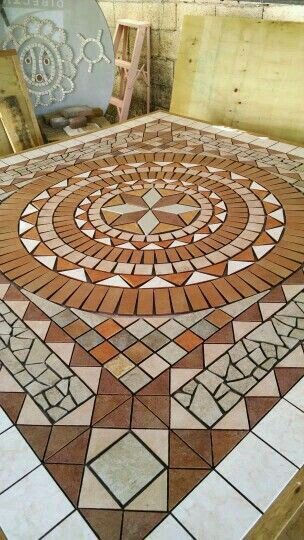
Mosaic flooring is incredibly versatile and can complement a wide range of interior design styles, from traditional to modern. Here are some examples of how mosaic flooring can enhance your space:
- Traditional Style: In traditional spaces, mosaic flooring can add an element of heritage and elegance. Classic designs featuring floral patterns or geometric shapes work well in these settings.
- Modern Style: For modern interiors, sleek, minimalist designs with neutral tones or metallic accents can be achieved using mosaic flooring.
- Bohemian Style: Mosaic flooring with vibrant, colorful designs can add a playful and artistic touch to bohemian-inspired spaces.
9. Mosaic Flooring in India: A Growing Trend
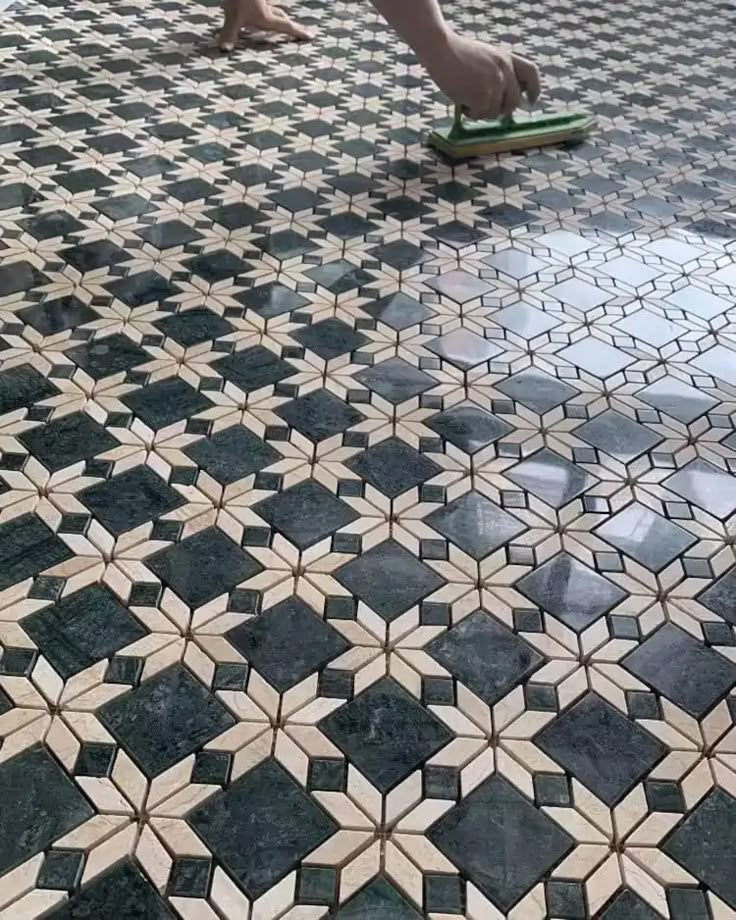
In India, mosaic flooring has been a popular choice for centuries, especially in traditional settings. However, in recent years, mosaic tiles have seen a resurgence in modern Indian homes, offering both aesthetic appeal and functionality.
Why Mosaic Flooring Is Popular in India
- Cultural Significance: Mosaic flooring is often used in temples, palaces, and historical buildings across India, making it an integral part of Indian architecture and culture.
- Durability: Indian homes often experience high foot traffic, and mosaic flooring is ideal for such conditions due to its durability and low maintenance.
- Vibrant Designs: The colorful and intricate designs of mosaic tiles align well with the bold and vibrant aesthetic commonly found in Indian interiors.
Explore more about mosaic flooring in India through our blog.
10. Tips for Choosing the Right Mosaic Flooring
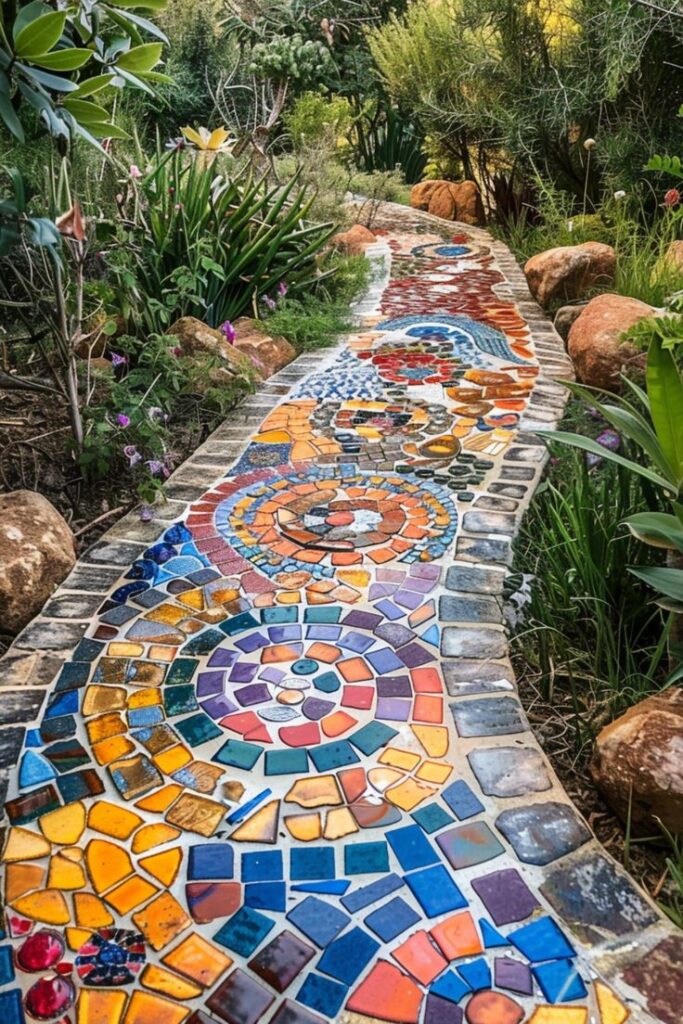
Choosing the right mosaic flooring for your space can be overwhelming due to the wide range of options available. Here are some tips to help you make the best choice:
- Consider the Space: Think about the function of the space. High-traffic areas like kitchens and bathrooms may benefit from durable materials like stone or ceramic.
- Choose a Design that Complements Your Style: Whether you prefer a classic, modern, or eclectic design, choose a mosaic pattern that complements your existing décor.
- Think About Maintenance: Some mosaic tiles require more maintenance than others. Make sure to select a material that aligns with the level of upkeep you’re willing to manage.
For more guidance, check out our residential and commercial interior design services.

